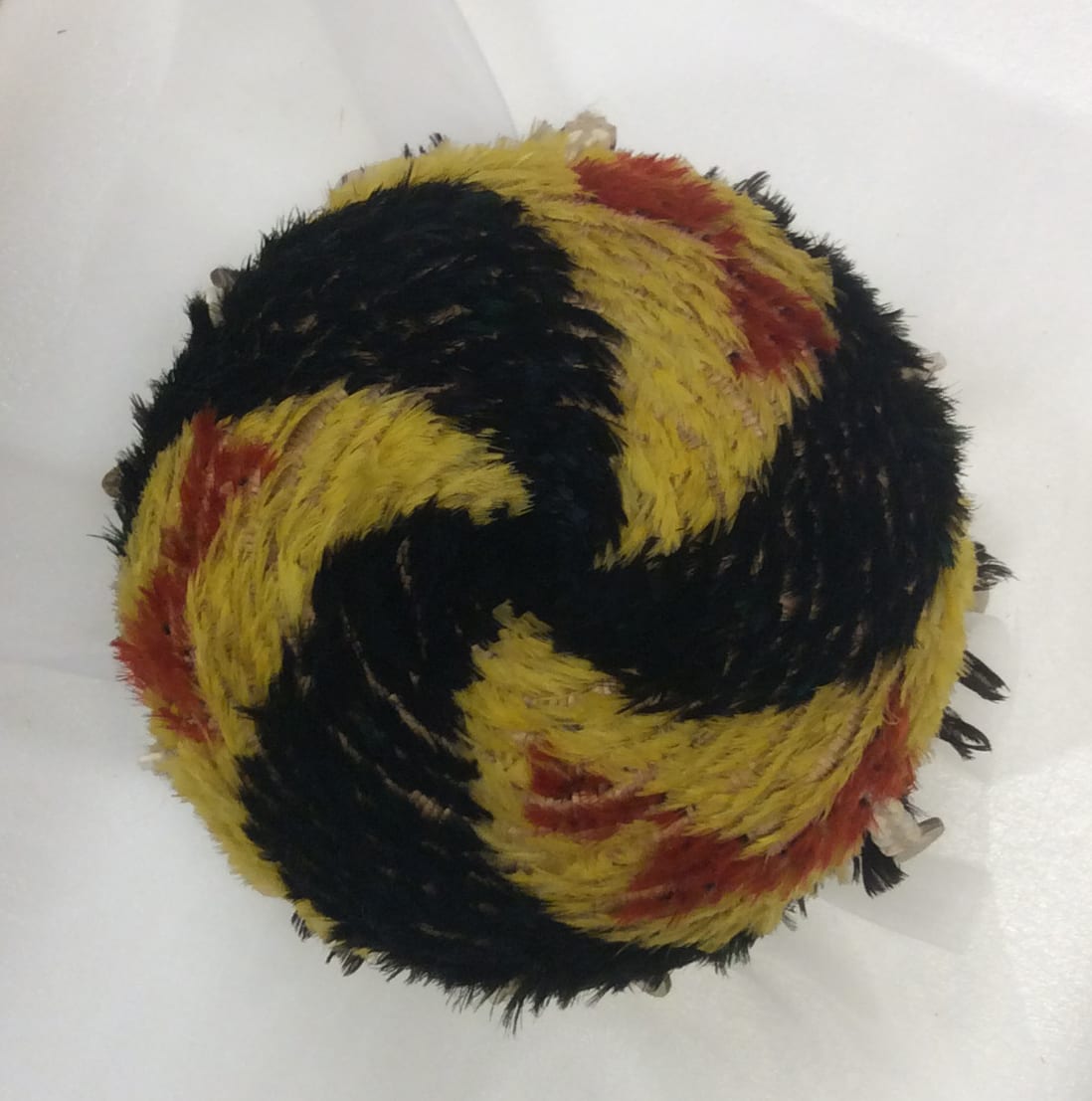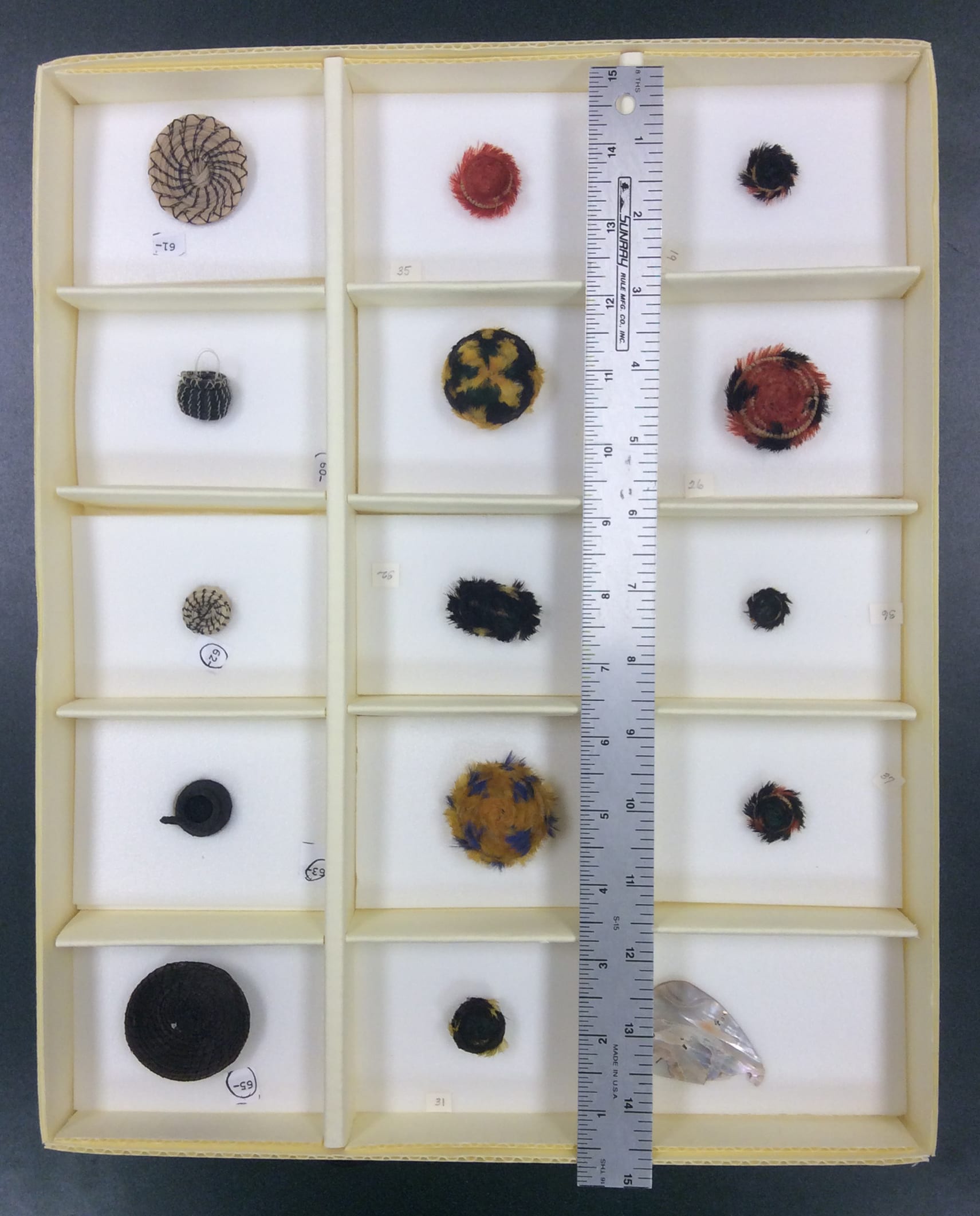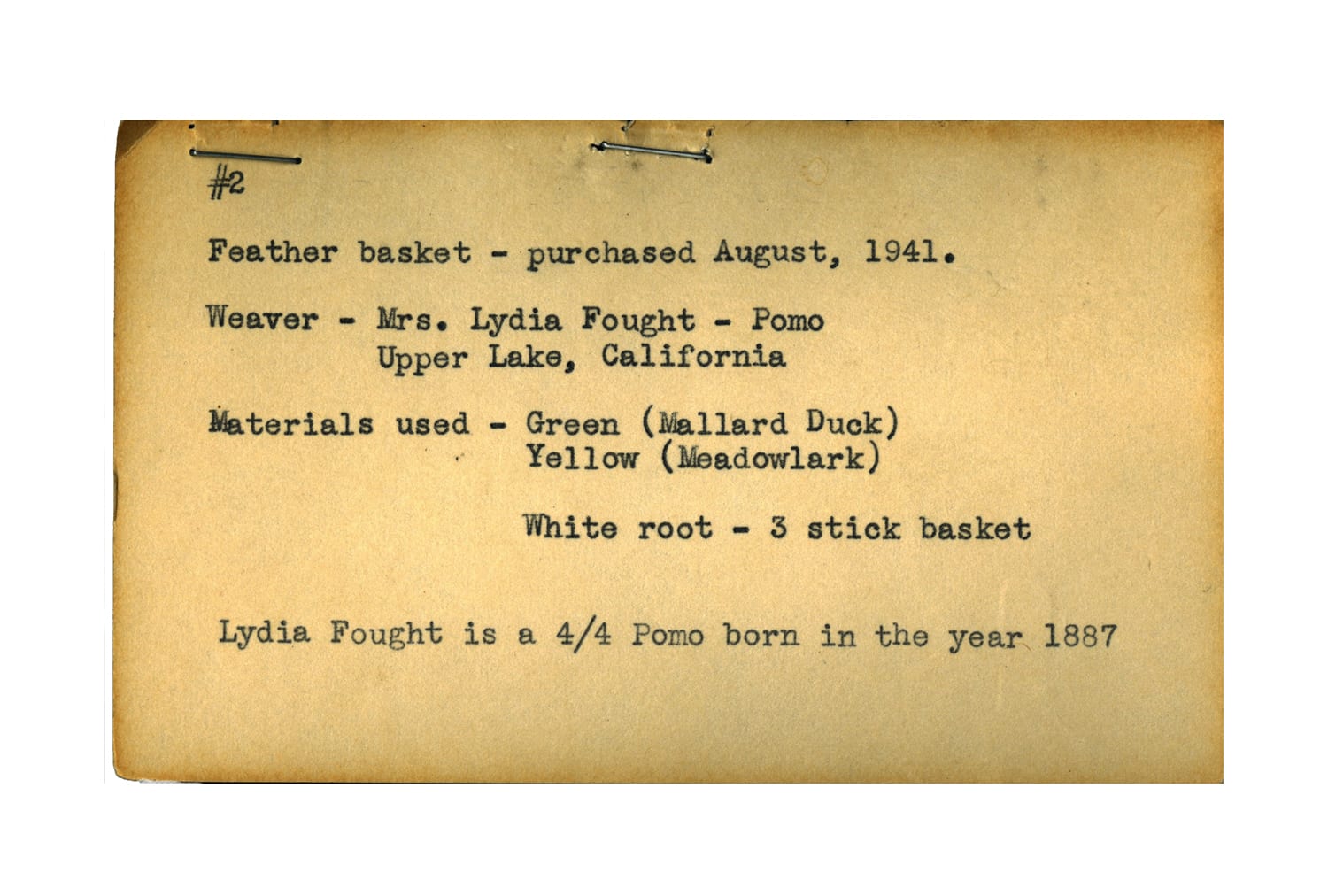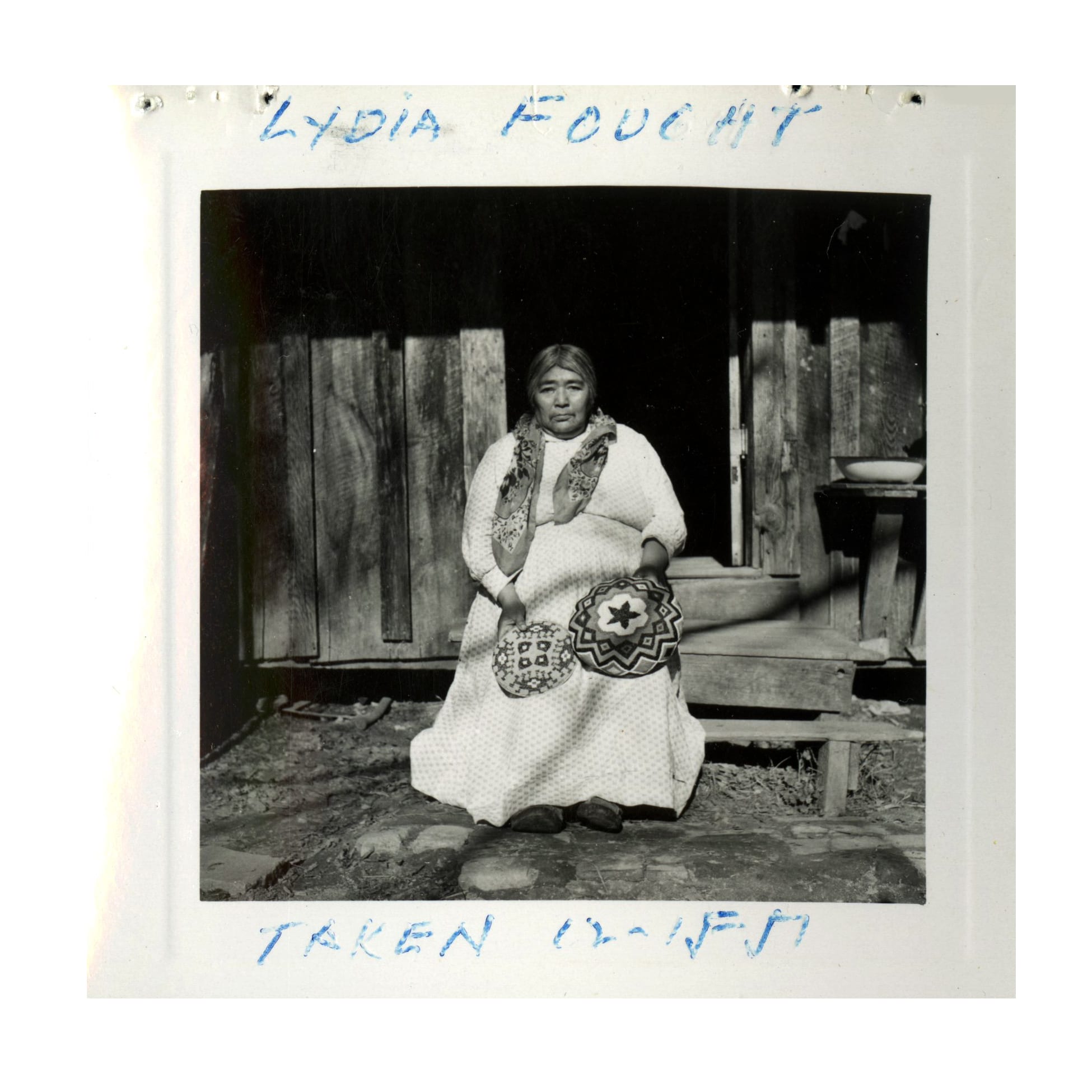Winter Break Hours and Services
Shields Library is closed through January 4, 2026. Digitization and interlibrary loan requests will be fulfilled after the library reopens on January 5.
Special Collections
50 Features of Special Collections: Pomo Feathered Baskets in the Michael and Margaret B. Harrison Western Research Center

Michael and Margaret B. Harrison Western Research Center is a collection of over 21,000 volumes on the American West. Over the years Mike Harrison collected Native American baskets, pottery, silver, and other Native American art. The majority of the artifact collection was donated to museums prior to the collection coming to UC Davis. However, some personal favorites were displayed in the Harrison home and were donated with the book collection.
Click here to find out more about the Harrison Collection
The Harrison Collection includes Native American handicrafts from the Southwest, Northwest Coast, California, and Alaska. There are approximately 30 pieces of pottery and 80 baskets including delicate Pomo feathered baskets. The Pomo baskets are of particular interest because of their beauty and fine workmanship.
In 1934 Mike Harrison worked for the Bureau of Indian Affairs and was transferred from the Southwest to San Francisco, California as assistant to the regional coordinator, Roy Nash. In 1935 he was sent to Ukiah, California as agent in charge of Lake, Mendocino, and Sonoma Counties. It was there that he connected with Pomo Indians and collected Pomo feathered baskets. The Pomo people are an indigenous people of California. The historic Pomo territory in northern California was large, bordered by the Pacific Coast to the west, extending inland to Clear Lake, and mainly between Cleone and Duncans Point. Pomo baskets made by Pomo Indian women of Northern California are recognized worldwide for their exquisite appearance, range of technique, fineness of weave, and diversity of form and use. While women mostly made baskets for cooking, storing food, and religious ceremonies, Pomo men also made baskets for fishing weirs, bird traps, and baby baskets.
https://en.wikipedia.org/wiki/Pomo_people#Basket_Weaving_Today
Pomo baskets are made with many details and many different designs. The materials used in making these baskets are harvested each year. Swamp canes, saguaro cactuses, rye grass, black ash, willow shoots, sedge roots and redbud are all used in the weaving of these baskets. After being picked, they are dried, cleaned, split, soaked and dyed. Sometimes the materials are boiled over a fire and then set in the sun to dry.
http://www.nmai.si.edu/exhibitions/all_roads_are_good/PomoBasket.htm
The intricately woven feathers worked into designs are spectacular works of art. This Pomo feathered gift basket by Carrie Davis of Upper Lake, ca. 1941 is solidly feathered in red, green and yellow, decorated with clam shell disc beads and abalone pendants. It is edged with quail plumes; 4” in diameter and 1 ¾ inches high.

The thumbnail size miniature baskets are true examples of the patience and artistry of the designer.

Of particular interest are Michael Harrison’s ethnographic notes regarding his basket collection. He notes the dates purchased (primarily from the 1930-40s), the name of the weaver, for instance one is noted as Mrs. Lydia Fought, a Pomo, from Upper Lake, California, and the materials used—one is described as Green (Mallard Duck), Yellow (meadowlark) and White Root-3 stick basket. Ms. Fought is noted as being full blood Pomo and born in the year 1887. He then takes a photograph of the maker with her wares.


This Pomo feathered gift basket by Lydia Fought of Upper Lake, circa 1941 is fully feathered in green and yellow; 4 ½ inches diameter and 1 ¾ inches high.

The beautiful baskets combined with the Mike Harrison descriptions make a wonderful small collection.